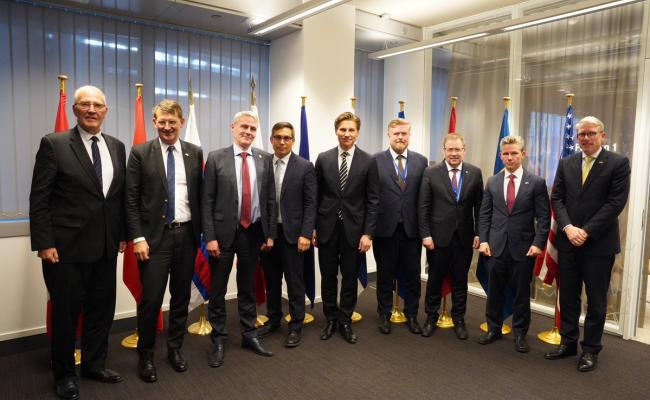Northern Norway Is Likely Facing a More Serious Hybrid Threat Situation, Says Professor
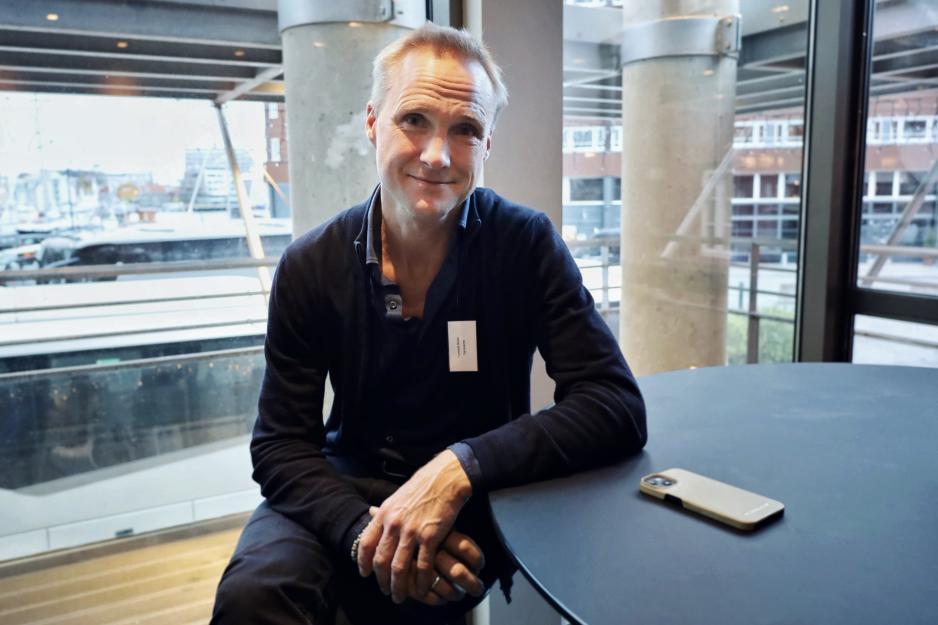
Tormod Heier, Professor of Military Strategy and Operations at the Norwegian Defense Command and Staff College, emphasizes the significance of making local communities in the North more resilient in the face of various forms of hybrid attacks. (Photo: Astri Edvardsen)
Tromsø (High North News): "I believe that the situation in the North will gradually worsen before the hybrid threat level stabilizes," says Professor Tormod Heier at the Norwegian Defense Command and Staff College. He calls for bolder moves to strengthen civil-military cooperation in the face of the hybrid threats.
"The Russians will not attack us where we are strongest, but where we are weakest," says Tormod Heier, Professor of Military Strategy and Operations at the Norwegian Defense Command and Staff College.
He is referring to vulnerability to hybrid threats and have several thoughts on how resilience should be built. But first: What is it that we are facing?
"I believe the situation in the North will gradually worsen before the hybrid threat level is stabilized and possibly decreases in strength," says Heier to High North News and continues:
"This is linked to how the Russian secret services – the FSB, the SVR, and GRU – must deliver more after Norway expelled 15 Russian "diplomats" last year. As pressure to deliver increases for those left, the willingness to take risks is impacted."
"At the same time, it seems that the Kreml has taken off its 'silk gloves'. The secret services have likely received expanded powers, as I interpret the situation in Europe. A concrete expression of this is the relative shift towards more sabotage of physical infrastructure. A shift toward mapping and testing of resilience and preparedness in Norwegian local communities might also be taking place."
Hybrid threats
• Hybrid threats can be defined as a set of coordinated, unwanted acts from foreign states or non-state actors below the threshold of direct armed conflict.
• The threat actor can combine diplomatic, informational, military, economic and financial, intelligence, and legal measures.
• The use of measures is often broadly distributed and long-term. The methods are both open, furtive, and hidden.
• The overarching aim is to create division and destabilization to achieve political or economic gain.
• Examples of hybrid threats are influence operations and disinformation, cyber attacks, state-controlled migration, acquisition of technological businesses and critical infrastructure, intelligence, and sabotage.
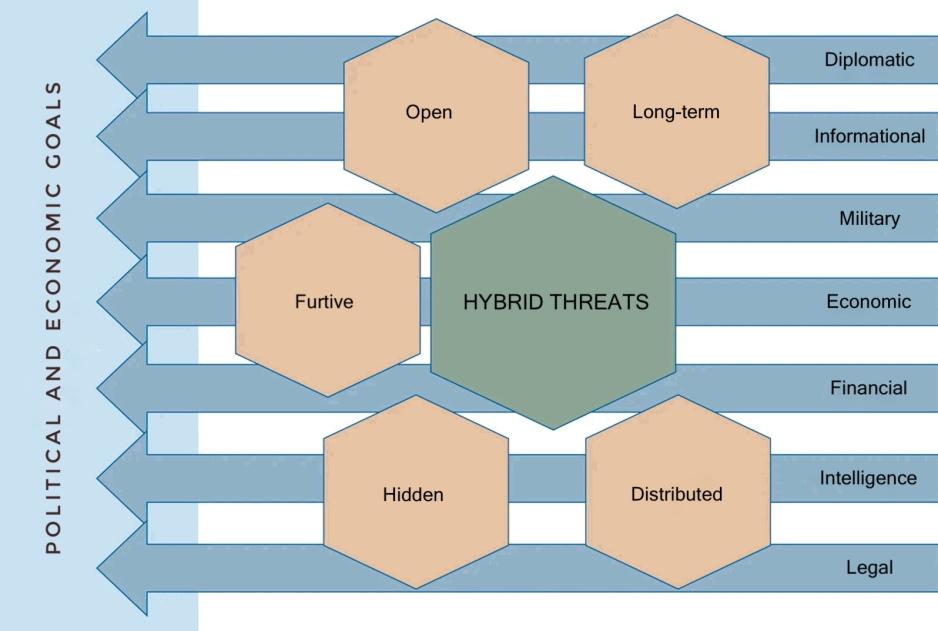
Hybrid threats involve the use of a wide range of means and challenges across sectors, levels and areas of responsibility. (Source: The Norwegian Total Preparedness Commission's report, NOU 2023:17, figure 7.1, editorial translation)
Experiences from Ukraine
This fall, Heier and Odd Jarl Borch, Professor at Nord University, have published the book Preparing for Hybrid Threats to Security (open access), which i.a. draws on experiences from the war in Ukraine.
At a recent Total Defense conference in Tromsø, Northern Norway, Heier talked about how warfare affects the civil society in Ukraine and what lessons and perspectives one can incorporate into local preparedness planning in Northern Norway.
He highlights one trend in particular from war-ridden Ukrainian local communities:
"A collaborative spirit grows in these local communities. One sees that the preparedness actors, such as the municipality, police and defense, are insufficient separately. They are too few, too small, and too vulnerable to the threats they face. Thus, they see beyond their own sectors, connect, and make resources meet."
"This does not happen through top-down strategies from Kyiv, but grows from the bottom as a virtue of necessity," says Heier and continues:
"The civil-military cooperation has truly been revitalized. And when this is the case in Ukraine during a war, well, perhaps we here at home in Norway should begin practicing the same thing?"
Is it very logical that the Russians will come rolling into Finnmark with tanks?
Worst thinkable vs. most likely
Heier directs his focus toward local preparedness and the potential for civil-military collaboration in the North:
"Northern Norwegian municipalities are characterized by chronic resource scarcity. The majority of municipalities in the Register for Governmental Approval of Financial Obligations are in the North. When one considers preparedness planning, what is the obvious thing to do? Well, it is to look toward the largest preparedness organization in Northern Norway, namely the Armed Forces," he says and further constructs his reasoning:
"The Armed Forces are to contribute to preventing war. War is the worst-case scenario, of course, but is it the most likely? Is it very logical that the Russians will come rolling into Finnmark with tanks supported by fighters, and that the Armed Forces, ports, and airports are bombed to pieces?"
The professor underlines NATO's political, economic, and military superiority over Russia.
"Russia is and will remain a mosquito compared to the world's most powerful defense alliance. The NATO countries account for over half of the world's total military expenditure – as long as the US continues its leadership of NATO, which I think it will. The 32 allies also account for more than 50 percent of the world's annual value creation measured in GDP. They have 22,000 military aircraft, 2,100 marine vessels, and can mobilize 3,6 million soldiers."
"Therefore, Russia will most likely make advances against our weak points below the threshold of war."
The trust between citizens and the state is at the top of the Russian list of targets.
Trust as a target
"Municipal Norway is the most exposed to hybrid threats. That is where our vulnerability lies," Heier points out and continues:
"In other words, at the top of the Russian list of targets is not the Finnmark Land Defense or the Brigade Nord, but the trust between citizen and state. The social contract that allows us citizens to have faith in the authorities to bring us daily safety where we live. If we don't experience that, we will gradually lose trust."
In this lies Putin's possible salvation, which is to eradicate Western unity and solidarity with Ukraine, the professor points out.
"For what happens if the municipalities are overloaded so that the citizens start to lose faith in the authorities? We see it in the elections in Europe. Those who grow on the erosion of trust are the political parties on the far right and the far left. It leads to strong polarization, and policy-making in the moderate center becomes increasingly difficult."
"Seven European states are now dominated by the far right. This is a gift seen with Russian eyes; these parties' values resonate quite well with the Russian values, and most of them are also quite critical to using resources for weapon support for Ukraine."
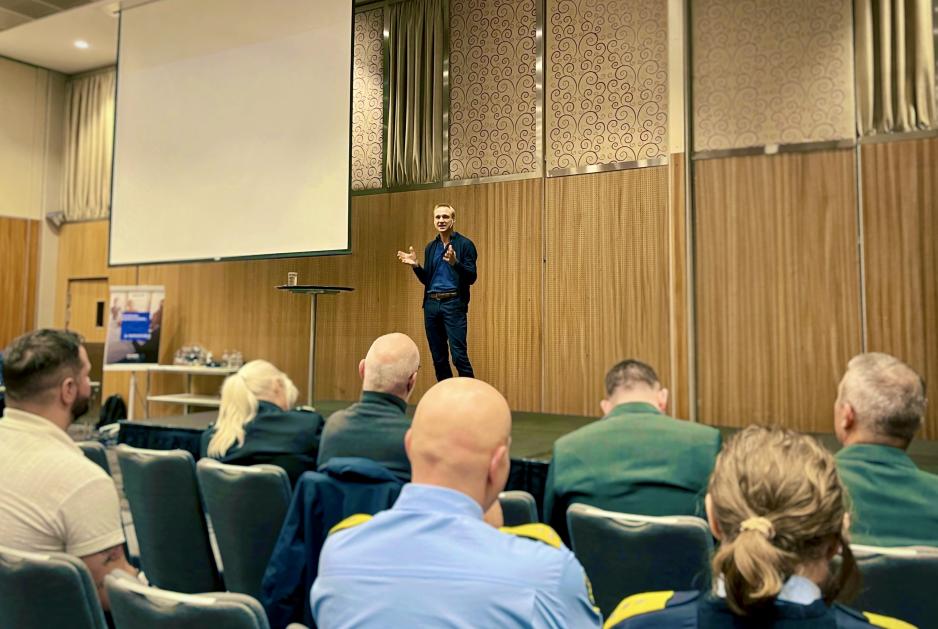
"We must protect what keeps us united; ‘the center of gravity – the hub of all power and movement upon which everything depends’, the social contract," emphasizes Tormod Heier at the Total Defense Conference in Tromsø. By the end of this year, the Norwegian government will present a white paper on total preparedness, and Heier advocates for a stronger focus on how the Armed Forces can support the municipalities and police, in particular, in creating more robust local communities.
Calls for boldness
"The municipalities constitute the first line of defense against the most likely challenges. It is also central that the police will lead the managing of the most relevant crisis scenarios, but the police service is not prepared for this. How can we align the resources and collaborate in the balance between the worst imaginable versus the most likely?" asks Heier and continues:
"I believe that we should be much bolder in looking at how we can use society's collective resources to create robust local communities in Northern Norway. My expectation for the government's upcoming white paper on total preparedness is that we go much further than we are normally comfortable with – and take brave steps to link civilian and military actors more closely together."
The professor reminds us that, according to Norway's adopted long-term defense plan, the Armed Forces will receive a total of NOK 1,635 billion until 2036.
"These are enormous resources that we can also use to ease the chronic shortage of resources in the municipalities and to strengthen the police. Important keywords are increased joint civil-military planning and exercising."
He himself has several proposals for concrete actions.
"A concrete example could be that the Army spends more man-years than it does today on building up more robust units for civil-military cooperation, so-called G9 and S9 units. These are tasked with interacting closely with the local community in which they operate daily, whether local authorities or residents," says Heier.
If we are to fight networks, we must also operate as networks.
Possible twists
"Another example could be that mayors, municipal directors, or preparedness coordinators get liaisons to the Armed Forces. Links to the Home Guard, Army, and the Armed Forces' operational headquarters in Bodø are particularly relevant. It would be beneficial to have direct channels between these groups, which, in my opinion, live too separately," he notes.
The professor also suggests the establishment of civil-military centers that bring together municipal representatives, police, the Armed Forces, and the most central actors within business and the voluntary sector.
"The idea is that these would meet regularly to develop a joint situational awareness of hybrid threats – and that they map vulnerabilities, prepare joint preparedness plans and practice implementing these. Through close interaction, you also get to know each other personally, which helps lower the threshold for calling when a crisis occurs."
"In other words, we must see ourselves as social entrepreneurs who break out of our rigid, fixed squares between which we have clarified roles and responsibilities – and start building horizontal networks that work across the vertical ones."
"The rationale is: If we are to fight networks, we must also operate as networks. The Russian secret services that engage in hybrid threat activities are quite dynamic and informal networks," Heier points out.

Cooperation between the Home Guard, police, fire service, health service, Civil Defense, and Norwegian People's Aid in Tromsø, Northern Norway, during the military exercise Nordic Response in March. As part of this, they trained for a scenario with a mass influx of injured people at the University Hospital in Northern Norway. (Photo: Fredrik Ringnes/The Norwegian Armed Forces)
Knowledge sharing
A leading idea behind Heier's proposals mentioned above is that the municipalities and the police should draw on the knowledge and skills of the Armed Forces.
"The municipalities and the police need input of expertise that they themselves do not have. Which one? Well, the ability to conduct operational planning. In other words, the ability to coordinate and orchestrate many different societal actors who, on a daily basis, live their own lives in different places and levels, but who, when the crisis occurs, must quickly come together and make each other better in the right place at the right time," says the professor and continues:
"This is about planning and decision-making processes that the military have been drilled in since the Officer Candidate Course. It lies in their spinal reflex. I believe there is untapped potential in making use of this military experience and competence. This is how you can make each other better – and the population can see that these are authorities and agencies that efficiently use scarce resources. It creates trust."
"Certain parts of Norway are more exposed than others and should perhaps be pilots to test out this kind of civil-military cooperation. In the North, I am thinking, for example, of Bodø with the Norwegian Joint Headquarters, Andøya with its air station, Tromsø with Grøtsund port, as well as the critical infrastructure on the coast of Finnmark, which is of importance to national security."
There should be much more training on crisis management led by police chiefs.
The Armed Forces as the supporting party
Heier also emphasizes the significance of civil-military exercises with increased alternation of who will be supportive and who will be supported.
"Unfortunately, I see a tendency in which the military forces exercise on full-scale war and expect the civil society to support them. This is important in the worst imaginable, but also the least likely situations. There should be much more practice of police chiefs leading crisis management, and then the military must accept playing a supporting role," he says.
The professor notes that this requires a very different kind of thinking and organizing of resources.
"Because that does not mean going to war, but into a civil society with many scared people. It requires much more tact than getting civilian support in a war against a uniformed military adversary that looks much like yourself."
"The military had this logic very much in mind after 20 years in Afghanistan. There, they operated in local environments in line with a comprehensive approach. This is also very relevant at home, but I am afraid that we have thrown relevant experience and expertise out with the bathwater. Because now, apparently, only one thing matters: to meet the Russian military threat."
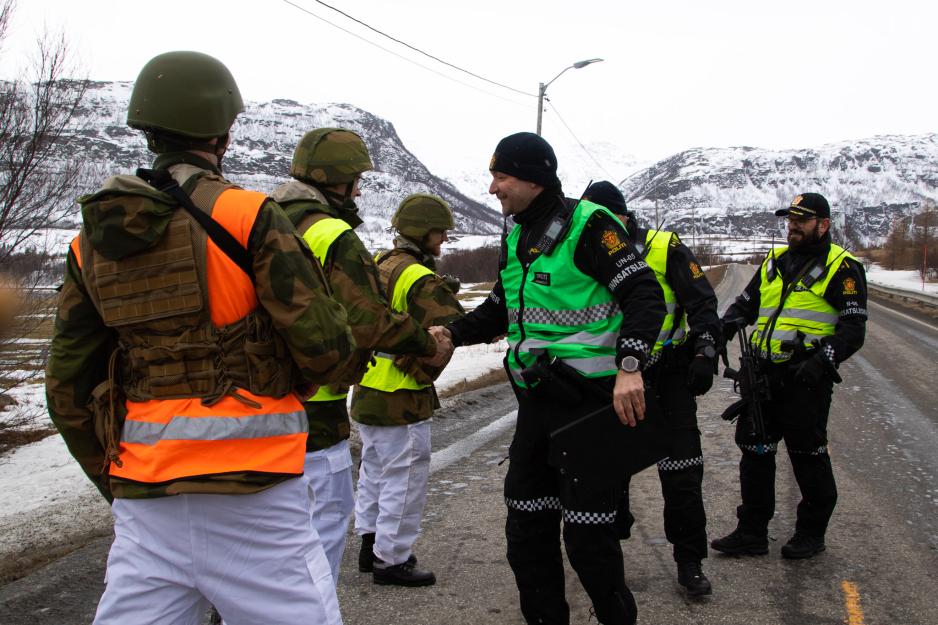
"In the most likely scenarios, way up on the crisis scale, there are be police tasks. It is not a gray zone between peace, crisis, and war, but a blue zone," says Tormod Heier, who believes that the police should get input from the Armed Forces' significant expertise in coordinating and leading large operations. Photo from joint training between the Home Guard and the police in Troms county, Northern Norway. (Photo: Ingvild Ekrol/The Norwegian Armed Forces)
Increased funds for civil society
Heier also points out that regardless of which Russian threats are to be met, hybrid or purely military, resilient local communities are required.
"A credible defense force that can deter the enemy from exerting pressure fully depends on a robust civil society. Thus, it would be strange to spend two percent of the GDP on more vessels and brigades in the Armed Forces if the foundation itself is not solid: solid local communities that will support military efforts," he says and continues:
"Just as important as increased defense budgets and the smart use of these funds are, therefore, increased budgets for the police, municipalities, and state administrators. Only when these, the voluntary actors and private businesses with preparedness tasks come together with the Home Guard and other parts of the Armed Forces, does the credible deterrent effect emerge."
"The resources must simply find each other and bring out the best in each other to be able to deter various threats."




